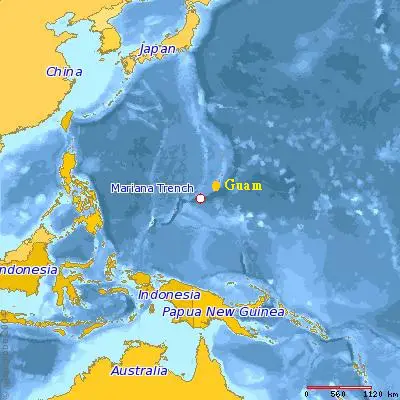The UN Global Compact Sustainable Ocean Principles has been signed by 30 companies and institutional investors to take steps to provide for a healthy and productive ocean.
The signatories to the principles include the container ship and supply vessel operator A.P. Møller – Mærsk, food and beverage company PepsiCo, and Norges Bank Investment Management that manages one of the largest funds in the world with over US$ 1 trillion in assets.
“The rapid deterioration of ocean health, which deeply affects biodiversity, coastal communities and the health of the planet, must be urgently addressed,” said Lise Kingo, CEO and Executive Director of the UN Global Compact. “The deterioration is caused by human activity, and we need to create a tipping point where a critical mass of businesses uses their capacity and competence to solve this challenge.”
After consulting with the stakeholders from the private sector, NGOs, academic institutions and UN agencies, the UN Global Compact Action Platform on Sustainable Ocean Business developed the Sustainable Ocean Principles. By signing to the nine principles, the compnies are committing to take steps against pollution, manage the usage of marine resources for the long term sustainability and be transparent about their activities and impacts which are related to the ocean.
At the Our Ocean Conference 2019 that will be held in Oslo, the Sustainable Ocean Principles will be highlighted. Torbjørn Røe Isaksen, Minister of Trade and Industry of Norway — the host country of the conference — said, “Bringing the private sector together as the UN Global Compact is doing, has a huge impact. When finance, classification, insurance and the operating companies together set the expectations higher, we as Governments should take that as a clear call to action.”
In September the Sustainable Ocean Principles was launched by the UN General Assembly. These principles are intended to support and supplement the Ten Principles of the UN Global Compact on human rights, labour, environment and anti-corruption. A set of practical guidelines documents will be published by the UN Global Compact in January 2020. This will help the companies in increasing the sustainability of oceans in different sectors.
Other entities that have signed the Sustainable Ocean Principles till now include ABN AMRO, CEiiA, Cermaq, Cisco Systems, CoreMarine, DNB Bank ASA, DNV GL, Dow Inc., Empower, Equinor, Gard AS, Global Sea Mineral Resources, Government Pension Fund Norway, Grieg Maturitas AS, Kongsberg Gruppen ASA, Lloyd’s Register, MAKEEN Energy, The New Zealand King Salmon, Nor-Shipping, Nordic Mining, Norwegian Guarantee Institute for Export Credits, Norwegian Shipowners Association, Ocean Bottle, Skretting, StormGeo, TATA NYK and Thorvald Klaveness.
A building block is provided to the companies by the principles to engage in ocean sustainability in the lead up to the UN Ocean Conference that will be held in June 2020 in Lisbon, Portugal, and beyond.
Quotes from business leaders
Geir Molvik, CEO of Cermaq, said, “Knowing that we need to increase global aquaculture production to limit temperature rise, the Sustainable Ocean Principles provide a needed reference for all ocean business as well as land-based industries to ensure a healthy ocean and responsible ocean use.”
Remi Eriksen, Group President and CEO of DNV GL, said, “The ocean represents an ocean of opportunities and we welcome the introduction of the Sustainable Ocean Principles. These principles will be an important reference point as businesses look to capitalize on ocean opportunities related to the provision of food, renewable energy and global trade, while at the same time working to mitigate the many threats to ocean health.”
Rolf Thore Roppestad, CEO of Gard, said, “We are pleased to be joining business leaders from around the world in setting clear and shared expectations through the Sustainable Ocean Principles. As a leading marine insurer, sustainable maritime development is a fundamental part of our mission and the principles assist in assessing risk in our own operations and insurance risk for our portfolio.”
Alastair Marsh, CEO of Lloyd’s Register said, “Having a common, global reference like the Sustainable Ocean Principles will provide a framework for all industries to progress in the right direction; both those with direct ocean involvement and adjacent sectors.”
Anders C. Anderson, CEO of MAKEEN Energy, said, “The health of our ocean has become an important and urgent issue, and I am proud that MAKEEN Energy is among the first companies to support and sign the Sustainable Ocean Principles. Today, we are already designing solutions that make it possible to bunker ferries with liquefied natural gas, which is much cleaner than conventional fuels. And in the future, we will continue focusing on responsible energy solutions that make a difference to people and planet.”
Simon Lowden, Chief Sustainability Officer of PepsiCo, said, “The growing threat that packaging waste poses to our communities and marine environments is one that must be taken seriously and acted upon with urgency. PepsiCo’s sustainable packaging vision is a world where plastics need never become waste, and through investment, innovation and partnership, we will continue to do our part, working aggressively on solutions toward a circular economy.”
Capt. Zareer Antia, General Manager of TATA NYK, said, “As a global shipping company we need to make sure all our stakeholders know that we are taking ocean health very seriously. We now have the Sustainable Ocean Principles as a new international standard, and this will be very useful for us to take even more positive actions.”
Reference: UN
from WordPress
https://www.maritimemanual.com/30-companies-commit-take-action-secure-healthy-productive-ocean/
 , under development since 2015, which complements our founding mission of ridding the world’s oceans of plastic.
, under development since 2015, which complements our founding mission of ridding the world’s oceans of plastic.